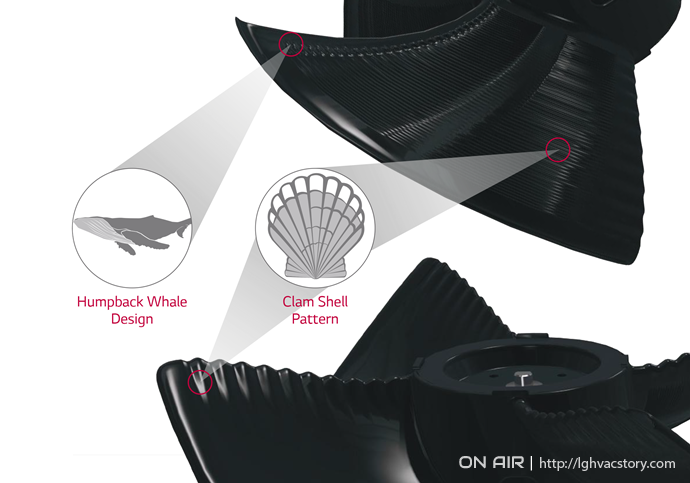Biology, Technology Come Together to Enhance Performance and Capacity in Next-generation Climate Solutions
In the modern age of science, innovation and discovery, it can be a little too easy to look at the world around us and become a bit too captivated by human ingenuity. Our tools and culture have made this planet our own, but mother nature always remains one step ahead and the technology we’ve unleashed still has much to learn from what she has produced over the past couple million years.

Biomimetics is the name for the field of science that seeks to do exactly that, treating the most impressive aspects of biology as the framework for innovation. Like many areas in the technology industry, LG is at the forefront of biomimetic innovation. Inspired by humpback whale flippers, the design of the company’s latest commercial air conditioners demonstrates how adopting the breakthroughs pioneered by nature will breathe new life into the technology of the future.
It doesn’t take a qualified biologist to recognize that the fins of the humpback whale are an engineering marvel to behold. Despite their large size, the unique flippers and fins of these whales make them surprisingly agile – giving humpback whales a hydrodynamic edge in the never-ending evolutionary arms race. Featuring large, irregular bumps across their front edges, humpback flippers modify the flow of water in order to keep whales on right track while swimming.
Though biomimetic technology is still in its infancy, airfoils fitted with tubercle bumps showed much higher lift efficiency and greater stall resistance in comparison to identical airfoils that lacked the bumps.

The bumps work by channeling air or water through smaller surface areas, resulting in higher speeds for the substances pushed through the channels. The rotating flows on top of the surface then increase lift. While air or water would typically run down the length of the surface’s edge and fly off at the tip, the bumps prevent this from happening. In addition, clamshell-inspired wavy moire patterns redirect air and water flow. This results in dampened noise output, heightened stability and greater efficiency.
It should come as little surprise then that LG’s work integrating the unique aspects of whale biology into its fan blades has already shown tangible benefits, demonstrating the viability of biomimetic research. The addition of biomimetic bumps to its fan blades helps LG’s MULTI V 5 operate more efficiently than conventional fans, dramatically increasing circulation and air flow. The MULTI V 5’s air flow has also been improved by 10% in comparison to conventional models while also offering a 20% decrease in power consumption.
LG teamed up with scientists from Seoul National University’s Department of Mechanical and Aerospace Engineering, to seamlessly integrate the flipper-inspired fan into the ultra-modern commercial air conditioner. This advanced biomimetic fan significantly increases wind capacity, boosting power while also reducing the level of noise output. The MULTI V 5’s innovative biomimetic fan combines with its advanced 4-sided heat exchanger and improved compressor to enhance the air conditioner’s efficiency and capacity. These upgrades even make it possible for a single outdoor unit to reach 26 HP.

The number of advances that have been gleamed from the flippers of humpback whales demonstrates that the more advanced our technology becomes, humans are only beginning to catch up with the progress nature has already made. With so much ground to make up, the future is incredibly bright for biomimetic technology, and LG is committed to carving out a name for itself in this dynamic field. As biomimetic-inspired design becomes more commonplace, LG’s pioneering role will allow the company to implement cutting-edge technologies across its entire product portfolio.
Post Views:
4,673





































